Meet the creators of the new ‘Imagine Blackness’ exhibit
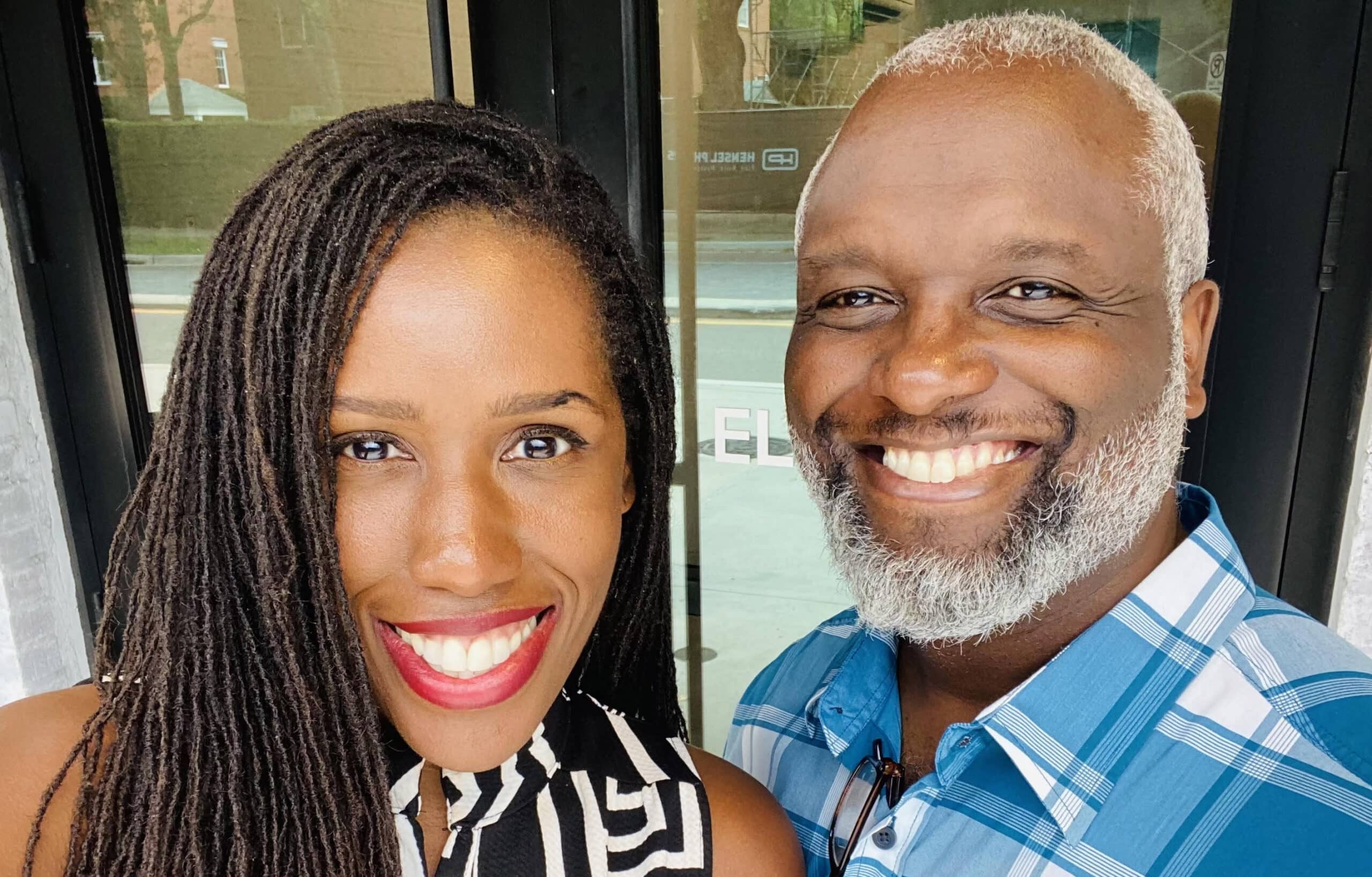
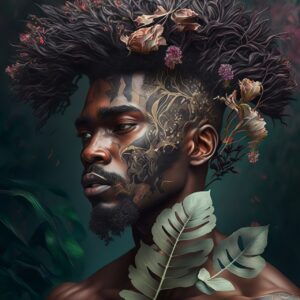
“Thrive.”
The faces that gaze from the otherwise stark walls of The Gallery of Creative Pinellas watch the visitor with a kind of regal indifference; handsome, haunting, beautiful, strong and self-assured, they are above divisiveness, above judgement, and inhabit a world where anything and everything is possible.
The exhibition is titled Imagine Blackness: Alternate Realities and Collective Dreaming; the portraits were created with artificial intelligence (AI) software, collaboratively by digital artist McArthur Freeman and his wife, Dr. Elizabeth Hordge-Freeman.
They both teach at the University of South Florida. He is an Associate Professor of Video, Animation, and Digital Arts; she is an Associate Professor of Sociology, and Interim Associate Vice Provost for Faculty Recruitment, Retention, and Engagement.
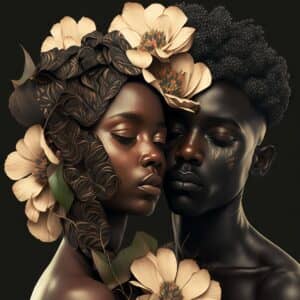
“Where Mine Begins.”
“In the exhibit,” explained Hordge-Freeman, “we’re drawing on ideas about Afro-futurism and speculative fiction – fiction that’s directed toward thinking about the future. Those are some of the broader themes that shape the images that you see.”
The exhibit, she pointed out, “is not one story; it’s really about getting our viewers to think about a number of stories. To really use the images as provocations for them, to think about futures and narratives that they haven’t thought about before. What comes out in the images are different settings, and different situations, that we hope then our viewers will be able to use their imaginations to build their own stories and narratives.”
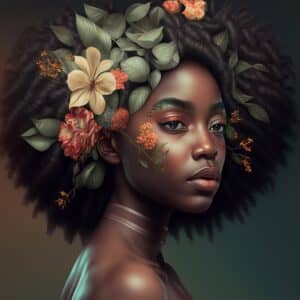
“Full Bloom.”
Imagination, of course, played a key role in creating the images seen in Imagine Blackness – an amalgam of human creativity and machine learning. Which is, pointedly, what Freeman teaches in his USF classes.
“Usually when you ask (the computer) for something it’s not necessarily going to create what you are expecting,” he said. “And then we have to modify the prompts and generate several, over time, and tweak those until we get something closer to what we’re interested in. Or discover.”
“In other rooms, you’ll see images of royalty, and images of fairies, and so there’s a lot of fantasy, future and technology all fused together.”
The author of Second-Class Daughters: Black Brazilian Women and Informal Adoption as Modern Slavery, Hordge-Freeman said much of her work “deals with racialized trauma and pain.”

“Fairy Queen.”
Working with her husband on an art exhibit that pulses with positivity was a welcome challenge, she admits. “Questions about Black beauty, questions about the future of Black folks, those are themes that exist in my ‘real,’ my sociological studies,” Hordge-Freeman said, “but this allows me to think through – with McArthur – how you bring social science with technology and art together, you can produce something that’s really compelling and that broadens the audience so they can engage with your idea and work.”
And the process, according to Freeman, was happily collaborative.
“Elizabeth plays an equal role in making the images,” he explained. “Using AI, it kind of allows you to describe images, and create subtle prompts to basically describe what you want. To get the images out of the computer. So we work back and forth. There are some that she generates, some that I generate separately, and some that we kind of piggyback on as we go along.”
Added Hordge-Freeman: “As a sociologist married to an artist, for our entire marriage I think there’s been a lot of synergy between the themes that we address in our work.”
Imagine Blackness is now on view at The Gallery at Creative Pinellas. McArthur Freeman and Elizabeth Hordge-Freeman will speak at the opening reception Saturday (Jan. 28). 2-4 p.m. Admission is free; RSVP here.
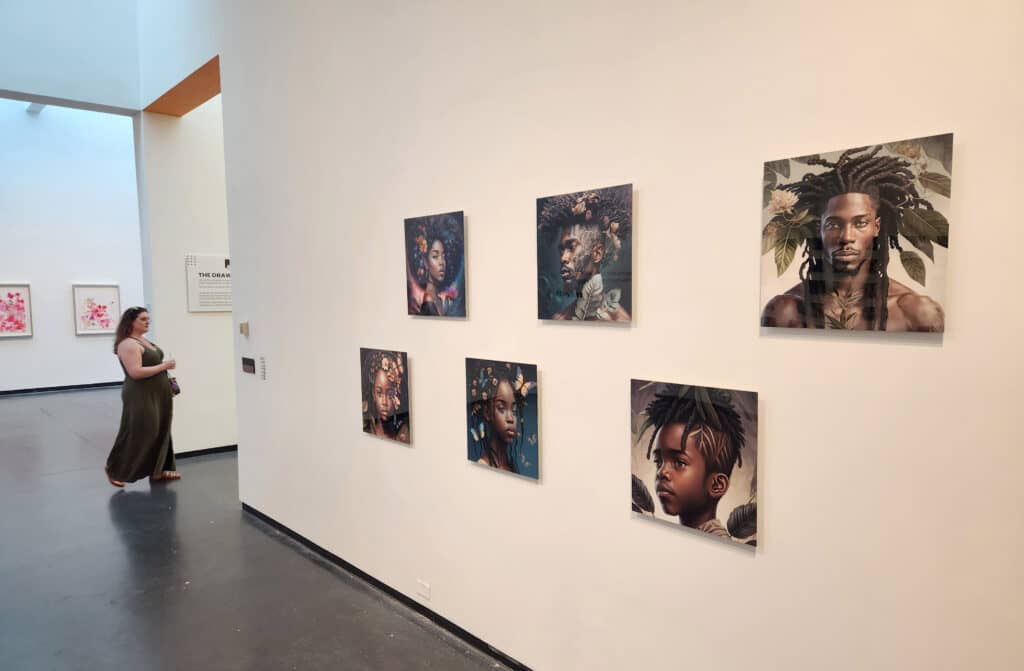
Photo by Bill DeYoung




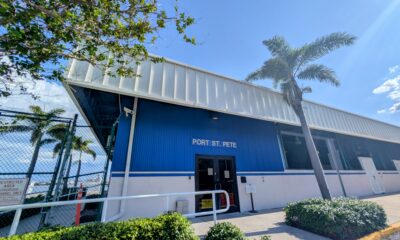



Danny E White
January 23, 2023at4:53 pm
I am hopeful that this exhibition will travel to the Woodson African American Museum in Saint Petersburg.